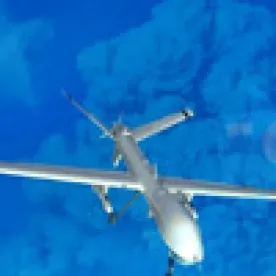Individuals who operate drones are subject to FAA regulations that prohibit careless and reckless operation of an aircraft, the National Transportation Safety Board ruled on November 18, 2014. In reaching its conclusion, the NTSB overturned a closely watched ruling by an administrative law judge, who previously held that regulations for “aircraft” did not apply to drones.
The NTSB found that unmanned aircraft systems (UAS) are “aircraft” for purposes of federal regulations because they met both the statutory and regulatory definitions of aircraft. “An aircraft is any device that is used for flight,” the NTSB stated.[1]
Although the decision is limited to the interpretation of the “careless and reckless” rule, the NTSB provided insight into its thinking on drones. For example, the Board noted that the FAA has adopted specific operating limitations for special types of aircraft – kites, rockets, and moored balloons – while excluding these types from the full set of regulations applicable to aircraft. The decision could prompt the FAA to take a similar approach for UAS.
The regulation of drones has been undergoing a dramatic shift in recent years. In 2012, Congress tasked the FAA with integrating drones into the national airspace system by September 2015, and the FAA has indicated that it will issue an initial set of regulations this year. The FAA has long maintained that it has authority to regulate UAS activity, and it has repeatedly sought to enforce its general prohibition on the use of UAS in commercial operations (unless an operation is specifically approved). The FAA’s authority was thrown into doubt, however, in March 2014, when an NTSB administrative law judge concluded that the lack of specific FAA regulations on drones precluded the FAA from imposing a fine on Raphael Pirker for flying a drone at the University of Virginia. By overturning that decision, the NTSB’s ruling reinforces the FAA’s authority to regulate UAS.
Interestingly, the Board declined to address constitutional arguments filed by a coalition of news organizations in an amicus brief in support of the drone operator. The news organizations argued that the FAA’s overly broad drone policy “has an impermissible chilling effect on the First Amendment newsgathering rights of journalists.” The NTSB limited its decision to the regulatory interpretation of “aircraft” and specifically declined to address constitutional issues.
The Pirker case is headed back to the FAA. Although the NTSB upheld the FAA’s authority to regulate careless and reckless UAS operations, the Board also remanded the case to the administrative law judge for a determination of whether the operator, in fact, operated the drone in that manner. In addition, the drone operator could appeal the NTSB’s decision to a U.S. Court of Appeals.
[1]Huerta v. Pirker, Order No. EA-5730, at 6 (NTSB Nov. 18, 2014) (internal quotations omitted).




 />i
/>i

